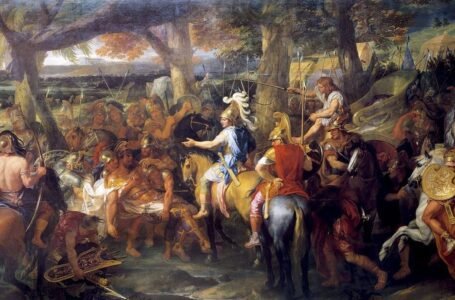Asvaghosa: Unraveling the Enigma of a Prolific Buddhist Philosopher and Dramatist

Asvaghosa: Unravelling the Enigma of a Prolific Buddhist Philosopher and Dramatist
Aśvaghoṣa, alternatively transliterated as Ashvaghosha and etymologically signifying “Having a Horse-Voice,” is identified as a prominent figure in the realm of Sarvāstivāda or Mahasanghika Buddhist philosophy, dramatic literature, poetry, and oratory, originating from the Indian subcontinent. His birthplace is recorded as Saketa, the modern-day Ayodhya. Aśvaghoṣa holds the distinction of being the inaugural Sanskrit dramatist and is renowned as the preeminent Indian poet preceding Kālidāsa. Notably, he is perceived to have shared a contemporaneous relationship with Kanishka, serving as his spiritual counsellor during the initial century of the Common Era. Aśvaghoṣa represents a foremost luminary within a cadre of Buddhist courtly writers whose epic works rivalled the contemporaneous Ramayana. It is noteworthy that, in contrast to preceding Buddhist literary creations predominantly authored in Pāli and Prakrit, Aśvaghoṣa’s compositions are composed in Classical Sanskrit.

The Formative Years of Aśvaghoṣa
The early life of Aśvaghoṣa, an illustrious figure in ancient Indian intellectual and cultural history, is a subject of scholarly intrigue and examination. Born circa 80-150 CE, Aśvaghoṣa’s origins trace back to Saketa, which is now recognized as Ayodhya, a significant cultural and religious centre in India. His early upbringing and education have been the subject of academic scrutiny, offering insights into the intellectual milieu in which he was nurtured.
Aśvaghoṣa, born into a Brahmin family, is a figure of historical and philosophical significance obscured by the passage of time. Historical accounts suggest that he initially espoused a stance openly opposing Buddhism. However, a pivotal turning point in his intellectual trajectory transpired following a fervent debate with a distinguished Buddhist scholar. This debate, which centred on the comparative merits of Hinduism and Buddhism, led Aśvaghoṣa to a profound reevaluation of his beliefs, ultimately prompting his conversion to Buddhism and his subsequent discipleship under his erstwhile adversary.

During his sojourn in Varanasi, a city steeped in the historical significance of being the site of the Buddha’s inaugural sermon, Aśvaghoṣa witnessed its conquest by the devout Buddhist Kushan emperor, Kanishka. This significant historical episode unfolded amidst demands for a substantial war indemnity, with the ruler of Varanasi opting to deliver a symbolic tribute in the form of a revered begging bowl, believed to have been utilised by both the Buddha and Aśvaghoṣa himself. Notably, Aśvaghoṣa ascended to a prominent position as a spiritual counsellor within Kanishka’s court, located in Peshawar.
Aśvaghoṣa’s eminence extended beyond his diplomatic role, as he was celebrated for his remarkable oratory skills. He delivered extensive discourses on the intricate tenets of Mahayana Buddhism during the proceedings of the fourth Buddhist council, an assembly he played a pivotal role in organising. His renown principally derives from his extraordinary ability to elucidate the complex doctrines of Mahayana Buddhism.
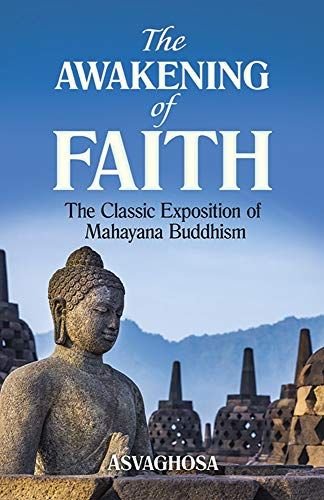
Among the literary compositions attributed to Aśvaghoṣa are the “Mahayana-shraddhotpada-shastra” (commonly known as “The Awakening of Faith in the Mahayana”), the “Buddhacarita” (“The Life of Buddha”), presented in verse, and the “Mahālaṅkāra” (“Book of Glory”). These works serve as enduring testaments to his profound philosophical and literary contributions within the context of Buddhist thought and intellectual discourse.
Significant Literary Contributions by Aśvaghoṣa in the Buddhist Canon
Aśvaghoṣa, a luminary in ancient Indian intellectual and literary history, left behind a corpus of significant works that have profoundly influenced Buddhist philosophy, literature, and the broader intellectual landscape of ancient India. His writings are characterised by their eloquence, depth of thought, and the sophistication with which he conveyed the tenets of Mahayana Buddhism. This account provides a detailed exploration of Aśvaghoṣa’s major works in an academic tone.

Aśvaghoṣa’s Mahayana-shraddhotpada-shastra (the Awakening of Faith in the Mahayana) is a seminal text in Mahayana Buddhist philosophy. Its origin is rooted in the East Asian Buddhist tradition, where it holds a central position as a foundational text. It is known as the “Dasheng Qixin Lun” in Chinese and the “Taishō Tripitaka” number 1666. The authorship of this text remains a matter of scholarly contention. While traditionally ascribed to Aśvaghoṣa, some scholars argue that the actual author might have been a different figure or that it may have been a composite work produced by a group of scholars. The date of its composition is also debated, but it is generally believed to have been written in India during the early to mid-first millennium CE. This treatise plays a pivotal role in expounding the fundamentals of Mahayana thought, offering a systematic framework for understanding the faith and doctrines underpinning this Buddhist tradition. It elucidates the concept of “shradhā” (faith) and its significance in the path to enlightenment. A pivotal theme in the text is the doctrine of “Tathagatagarbha” (the Buddha-nature), which posits that every being possesses the potential to attain Buddhahood. This idea diverges from earlier Buddhist doctrines that emphasised the impermanence and insubstantial nature of all phenomena. The “Mahayana-shraddhotpada-shastra” explicates the notion of Tathagatagarbha in great detail, presenting it as a key tenet of Mahayana thought. This work remains influential in Mahayana Buddhism, particularly in East Asian Buddhist traditions. “The Awakening of Faith” had a profound impact on East Asian Buddhism, particularly in China, where it played a pivotal role in shaping the intellectual landscape of Buddhist thought. It influenced the development of the Tiantai and Huayan schools and was embraced as a core text in the Chan (Zen) tradition. In Japan, it became an integral part of the Tendai and Shingon traditions.
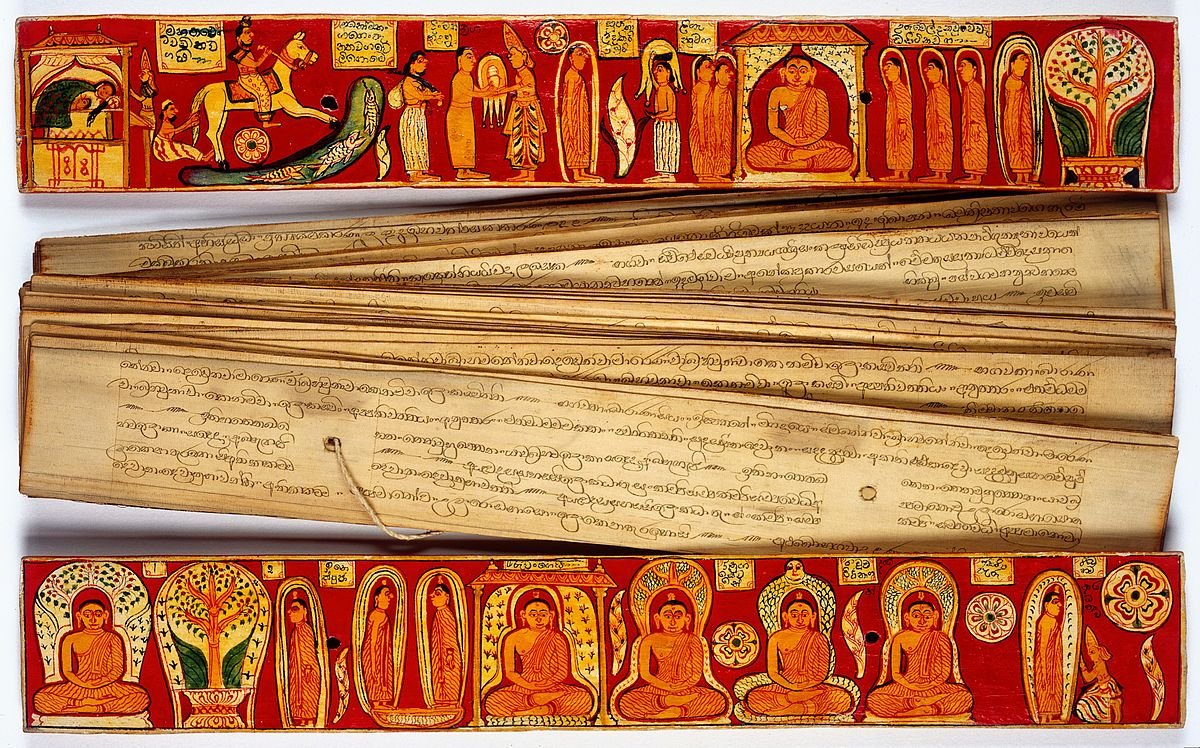
Buddhacarita (the life of Buddha) is one of Aśvaghoṣa’s most celebrated literary achievements. This epic poem, composed in ornate and sophisticated Sanskrit verse, narrates the life of Siddhartha Gautama, from his princely birth to his enlightenment and subsequent teachings. It is a testament to Aśvaghoṣa’s prowess as a poet and storyteller, and it remains an invaluable source for understanding the life and times of the historical Buddha. The “Buddhacarita” is believed to have been composed during the early centuries of the Common Era, placing it within the sphere of Mahayana Buddhism. This text not only functions as a biography of the Buddha but also serves as a representation of the evolving Buddhist literary tradition during this period. Aśvaghoṣa’s “Buddhacarita” is divided into twenty-eight cantos, and it adheres to the classical Indian poetic tradition known as kavya. The poem artfully and systematically narrates the life of Siddhartha Gautama, commencing with his princely birth in the city of Kapilavastu, his early life within the confines of the palace, and his eventual encounters with the realities of suffering and impermanence. The narrative then follows Siddhartha’s decision to renounce worldly luxuries in pursuit of spiritual realisation, his ascetic practices, and culminates in his attainment of enlightenment under the Bodhi tree at Bodh Gaya. The “Buddhacarita” masterfully interweaves various thematic elements within its narrative. It emphasises the Four Noble Truths, the Eightfold Path, and the concept of nirvana, providing readers with an in-depth exploration of fundamental Buddhist principles. The poem underscores the significance of compassion, selflessness, and the quest for spiritual enlightenment. Aśvaghoṣa’s poetic prowess is evident throughout the “Buddhacarita.” He employs intricate Sanskrit verse and employs sophisticated literary devices to convey the spiritual journey and awakening of the Buddha. The text is replete with metaphors, similes, and other stylistic embellishments that enhance its aesthetic appeal. The “Buddhacarita” holds a special place in the history of Buddhist hagiography. It served as a prototype for numerous subsequent biographical works on the Buddha. Additionally, the poem’s literary and philosophical richness has made it an essential text for scholars of Buddhism, classical Sanskrit literature, and Indian intellectual history.

The Mahālaṅkāra (Book of Glory) is another significant work attributed to Aśvaghoṣa. In this text, he explores the concept of “glory” (laṅkāra) within the context of Buddhism, delving into the attributes and qualities that make a Buddha extraordinary. The text provides a profound contemplation on the exalted nature of the Buddha and the reverence he commandsA striking aspect of “Mahālaṅkāra” is the eloquent and ornate style in which Aśvaghoṣa presents his ideas. His literary finesse and use of classical Sanskrit elevate the text to a level of sophistication seldom surpassed in the realm of Indian literature. Aśvaghoṣa employs poetic devices and rhetorical flourishes to convey the awe-inspiring nature of a Buddha’s attributes.The work is structured as a discourse, and it is divided into chapters, each dedicated to elucidating different aspects of the “glory” of a Buddha. Aśvaghoṣa systematically expounds upon the magnificence of the Buddha’s wisdom, compassion, moral purity, and other virtues, providing a comprehensive understanding of the exalted nature of a fully awakened being. The “Mahālaṅkāra” holds profound philosophical significance within the context of Mahayana Buddhism. It delves into the Mahayana view of Buddhas as beings of limitless compassion and wisdom, whose qualities extend far beyond the conventional understanding of human virtues. The text not only extols the Buddha as an embodiment of these qualities but also serves as an aspirational guide for Buddhist practitioners striving to cultivate such virtues. It served as a source of inspiration for subsequent Mahayana philosophers and scholars, enriching the discourse on the nature of enlightenment and the qualities of an enlightened being. Its influence is particularly pronounced in East Asian Buddhist traditions, where it has played a significant role in shaping doctrinal understandings.
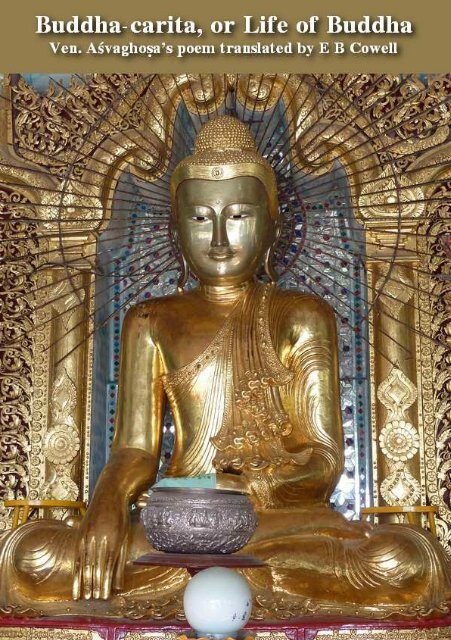
Saundarananda (Handsome Nanda) is an epic poem composed by Aśvaghoṣa that focuses on the life of Nanda, a half-brother of the Buddha. The narrative traces Nanda’s transformation from a worldly individual to a devoted Buddhist monk. Aśvaghoṣa employs his poetic skills to convey the emotional and spiritual journey of the protagonist, reflecting the themes of renunciation and enlightenment.
Aśvaghoṣa’s Sutralankara (Ornament of the Sutras) is a treatise that examines the qualities and attributes of Buddhist sutras. It provides a comprehensive framework for understanding the nature of Buddhist scriptures and their role in conveying the teachings of the Buddha.
Enduring Legacy and Profound Impact of Aśvaghoṣa
Aśvaghoṣa is widely recognized as the first Sanskrit dramatist. He transitioned from the predominantly Pāli and Prakrit literary traditions to compose in Classical Sanskrit, thus playing a pivotal role in the evolution of Sanskrit as a language of intellectual and literary expression. His contributions significantly enriched the Sanskrit literary corpus. Aśvaghoṣa’s works, particularly the Mahayana-shraddhotpada-shastra (“The Awakening of Faith in the Mahayana”), are seminal texts in Mahayana Buddhist philosophy. His systematic expounding of Mahayana concepts, such as the notion of faith and the path to enlightenment, has profoundly shaped the development of Mahayana thought and its various schools. Aśvaghoṣa’s literary virtuosity is manifest in his epic poem Buddhacarita (“The Life of Buddha”). This work is not only a comprehensive and poetic biography of the Buddha but also a testament to Aśvaghoṣa’s storytelling prowess. It has served as an enduring source of inspiration for subsequent Buddhist biographical literature. Aśvaghoṣa’s literary contributions have transcended the realm of written text to influence the broader Buddhist cultural landscape. His works have inspired artistic and cultural representations of Buddhist narratives, contributing to the rich tapestry of Buddhist art, sculpture, and iconography. Aśvaghoṣa’s works have been a subject of scholarly examination and interpretation. Scholars continue to engage in debates surrounding his life, authorship, and the nuances of his philosophical contributions. This academic discourse ensures that his legacy remains a vibrant field of study.

Conclusion
In conclusion, the scholarly examination of Aśvaghoṣa, the distinguished Indian philosopher, poet, and orator, underscores the profound and enduring impact of his contributions to Buddhist philosophy and Indian literature. His pioneering transition to Classical Sanskrit as a medium of literary expression marked a critical juncture in the evolution of the language and its role in intellectual discourse. Aśvaghoṣa’s ability to elucidate intricate Buddhist doctrines with clarity and eloquence, as exemplified in works like the Mahayana-shraddhotpada-shastra and the Buddhacarita, has rendered his writings foundational texts in the Mahayana Buddhist canon.
Moreover, his literary excellence, narrative skill, and evocative storytelling in the Buddhacarita have not only contributed to the rich tapestry of Buddhist literature but have also inspired artistic and cultural representations of Buddhist narratives, transcending textual boundaries. The universality of his ideas is further underscored by their resonance in East Asian Buddhist traditions, wherein his works continue to be cherished and studied.
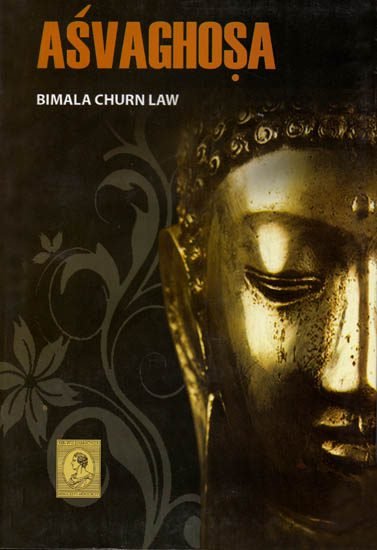
Aśvaghoṣa’s enduring legacy, as a pioneering Sanskrit writer and a profound philosopher, remains a vibrant field of scholarly investigation. His influence on Buddhist thought, doctrinal clarity, and contributions to the broader cultural and artistic heritage of Buddhism are testaments to his enduring significance within the intellectual and literary landscape of ancient India. As scholars continue to delve into the depths of his life and works, Aśvaghoṣa’s enduring impact remains a testament to the timelessness of profound philosophical thought and literary excellence.
